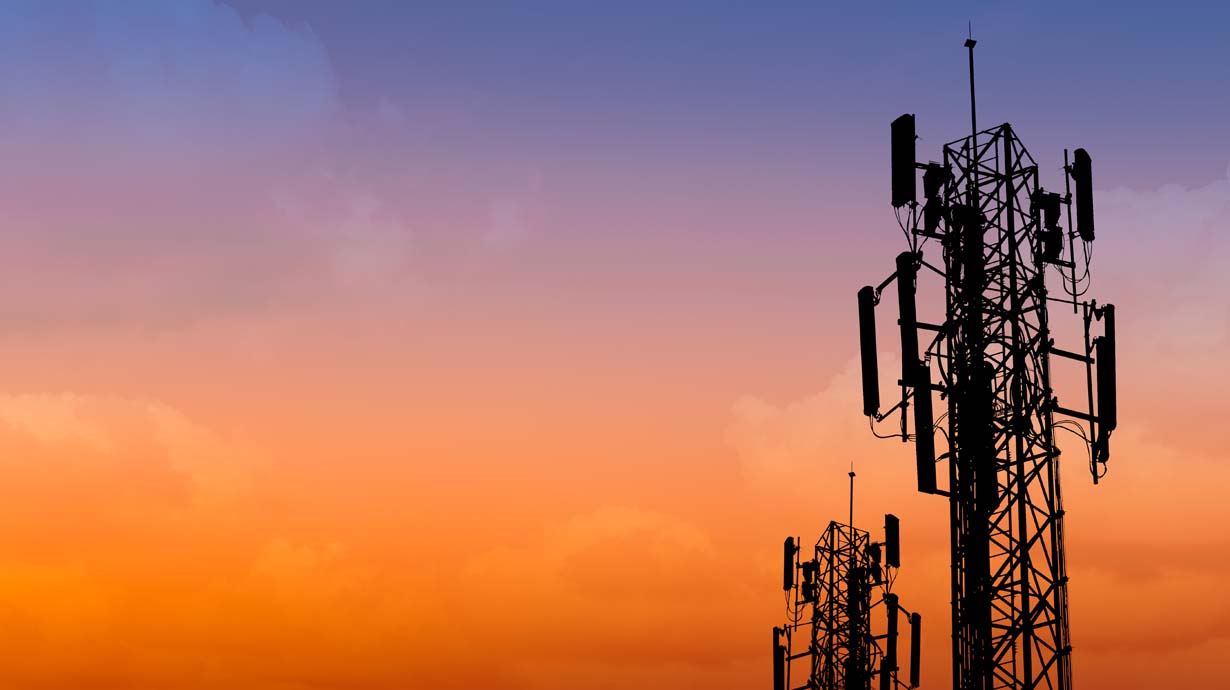How Cellular Updates Impact GPS Trackers
This article was written prior to the start of the CDMA Verizon sunset. Call to get additional/updated information on our GPS technology and see where we're at today!
Key Takeaways:
- GPS trackers calculate location using satellites but report that location via cellular signals.
- Cellular networks have evolved from 2G to 4G/LTE, impacting older GPS devices.
- AT&T's discontinuation of the 2G network may cause spotty coverage in some areas, but alternatives like Verizon CDMA offer better coverage.
- LTE is the future of GPS tracking, though current limitations include higher costs, power consumption, and larger sizes.
- BrickHouse Security uses Verizon's network for more reliable service, with options for upgrading older devices still available.
A lot of people don’t realize that while GPS trackers use global positioning system satellite signals to calculate location, they report that location using cellular signals. Here is how those cellular services have evolved in recent years: At the end of 2016, AT&T completed a nationwide upgrade of its cellular technology a move that affects some GPS and security system users but will ultimately result in better service and more robust coverage in the United States.
Cellular System Changes are No Cause for Panic

There’s no need to be worried about your service when changes like these take place. If, for some reason, your service is to be discontinued or altered, you will find out long before the change takes place. BrickHouse Security anticipates and plans for these major transitions. Here’s an example of how that happened in the last major shift:
AT&T sunsetted its 2G GSM cellular network. While the 2G GSM network has been replaced long ago on most modern smartphones and tablets (in favor of 3G, then 4G and LTE), it's still the industry standard for machine-to-machine (M2M) communications--and that includes GPS and home alarm communication systems.
Cellular and alarm systems rely on older networks to report location for a couple of reasons: they're less expensive than faster networks and, because these devices don't require constant, high-volume data use (like having a conversation or streaming video on your phone), a slower network provides more than enough data to serve their purposes.
While we never partnered with AT&T for our GPS and home alarm services, the telecom giant’s move away from the network affects the entire industry. Our older model GPS trackers and home alarm systems use the T-Mobile GSM network. T-Mobile committed to servicing 2G GSM customers through 2022, at least. So no matter what AT&T plans to do, our existing devices will continue to provide world-class service in areas well covered by
T-Mobile towers for years to come.
That said, in some areas of the country, tracking and home alarm service will be affected by AT&T's abandonment of the 2G GSM network. To understand why, it's important to know how AT&T sunsetted its network.
Through a process known as 2G harvesting, AT&T and other cell providers will take existing 2G frequencies and convert them to 3G and LTE. Oftentimes these conversions will happen with little warning to service providers, causing spotty coverage for 2G devices where there was once great service; a change made all the more confusing because it typically happens concurrently with cell phone service getting better.
BrickHouse trackers and security systems don’t use AT&T's network, but in certain parts of the country AT&T owns the cell towers (in other parts of the country, T-Mobile and other telecom providers own the towers), and they rent out bandwidth to competitors. In areas where AT&T owns the towers, the company’s move away from 2G would have resulted in spotty service for all 2G devices in the area, including ours.
A GPS tracker will still record location information through these areas of spotty coverage, however, and then report that history through the GPS platform when the device regains a data connection. Think of it like trying to send a text in a dead zone; the text will eventually send once cell service is restored. When you view the tracker's location history it may not indicate a dead zone, because it will be recording location information throughout; the dead zone will only present itself when you view the tracker's live location and it happens to be traveling through an area without coverage.
It's the nature of communications technology to change over time. As faster data connections become available, they replace older modes, yet still rely on existing infrastructure (towers) to transmit data. By shuttering 2G GSM and dedicating the same airwave space to 3G and LTE, cell providers like AT&T can increase data capacity by more than a hundredfold.
Verizon CDMA is the Best Network Right Now

As the industry moved away from the 2G GSM network, it was important to us to ensure the best service possible at the most affordable price. It was apparent that AT&T’s abandonment of 2G GSM wouldn't completely degrade our service, but it would cause enough problems in enough parts of the country that it made sense to move away from 2G GSM entirely.
In the United States there are two types of networks: GSM and CDMA. The two major GSM providers are T-Mobile and AT&T. Since AT&T's actions affect T-Mobile's service, we decided to move to the CDMA network. Now you may be wondering, what's the difference?
For most users, the differences between the networks are relatively negligible. The main difference is that GSM network devices store customer information on removable SIM cards. CDMA devices use network-based white lists to verify subscribers, so no SIM cards are required. GSM also works internationally (the acronym is short for Global System for Mobiles). Europe mandated the use of the GSM network in 1987 and the rest of the world tended to follow suit.
The important thing to remember is that, regardless of whether they’re CDMA or GSM, some networks are better than others, which is why BrickHouse decided to move to Verizon's CDMA network. Verizon offers the best coverage in the United States across the most amount of markets. As the number of dead spots in the GSM network continue to grow, Verizon's CDMA network is only getting stronger.
LTE is the Future

When we were selecting networks, we not only considered GSM vs. CDMA, but also 2G vs. 3G vs. LTE. While 3G coverage offers faster data speeds than 2G, 3G coverage on the GSM network can be spotty in the same way that 2G coverage can be spotty due to AT&T’s sunsetting of its network. And, if you recall, M2M devices don't require the data speeds offered by 3G. For these reasons, we selected Verizon’s CDMA network to offer the best service at the lowest price.
While CDMA provides the data speeds needed for a GPS tracker or a home security system, the future is undoubtedly in LTE (the acronym literally means Long Term Evolution). Eventually all of our devices will be on the LTE network, but right now, there are key factors prohibiting the switch: price, power, and size.
LTE chips are more expensive, more power hungry, and larger than their 2G counterparts. And, as previously stated, M2M devices don't require the high-speed data offered by LTE, which is the main benefit of having a device on that network. Because of their data consumption, LTE devices tend to burn through battery much faster than 2G devices (see your smartphone as an example). As a result, battery-powered trackers need to be significantly larger to accommodate such a power source. As of now, hardware technology hasn't caught up to the prowess of the LTE network; although we do expect to be there within five years or sooner.
What This All Means to You

We understand if this alphabet soup of CDMA, GSM, 2G, 3G, 4G, LTE and M2M can be hard to keep straight, so let's be straightforward here. All of the GPS trackers and home security systems sold by BrickHouse Security from here on out will operate on the reliable Verizon network. If you've purchased a GPS tracker in the past several years, you've got the best coverage available at the best possible price.
For older devices on the T-Mobile network there are a few options available to you, but the most important thing to remember is that there is no urgency. Although AT&T is sunsetting its 2G network, which can affect coverage in more rural areas, our devices on the T-Mobile network will continue to offer quality service for years to come. If you've noticed that your service has become degraded, chances are you live in an area affected by the 2G sunsetting. If so, contact us and we will get you on a Verizon CDMA device as quickly and affordably as possible. It may be a week from now, a month from now, or years from now. Whenever you're ready to make the switch to a newer device, it is our commitment to you to make the transition as painless as possible.
For those that use a best GPS tracker internationally, BrickHouse will continue to offer devices on the GSM network.
It's an exciting time in the home security and GPS tracker industry. But just because change is coming, the transition doesn't need to be confusing or frustrating. Instead, the 2G sunset represents an opportunity to get better coverage, and higher performance devices at the best rates ever. We at BrickHouse welcome the change, and welcome you into the future.
For more information about GPS service and cellular networks, call a BrickHouse GPS expert at (800) 654-7966.
This is a legacy article written prior to the start of the CDMA Verizon sunset. Call to get additional/updated information on our GPS technology and see where we're at today!
Posted by Kellie Kendall on Apr 29th 2024
